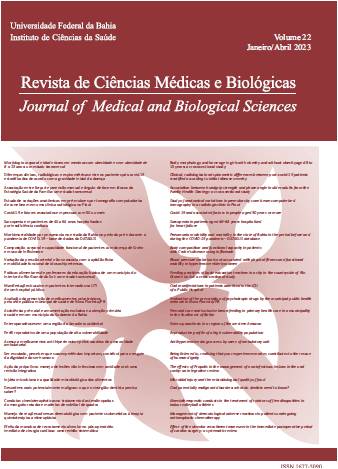Sarcopenia in middle-aged patients with heart failure
DOI:
https://doi.org/10.9771/cmbio.v22i1.52996Keywords:
Sarcopenia, Muscle Strength, Skeletal Muscle, Heart FailureAbstract
Introduction: heart failure (HF) and sarcopenia are prevalent and interrelated conditions, being important causes of functional limitations. Objective: to evaluate sarcopenia criteria, and their relationship with cardiometabolic parameters, in patients aged 40–64 years hospitalized for HF. Methodology: Cross-sectional study including patients with established HF. Appendicular skeletal muscle mass (ASMM) was assessed using dual-energy X-ray absorptiometry (DXA), considering low ASMM women with ASMM/height² <5.5 kg/m² or ASMM/body mass index (BMI) <0.512 and men with ASMM/height² <7.0 kg/m² or ASMM/BMI <0.789. Low handgrip strength (HGS) was considered when <16 kg in women and <27 kg in men. Results: we evaluated 109 patients (50.5% women), with a median age of 58 years. Low ASMM was found in 41.3% and low HGS in 64.2%, with no significant correlation between HGS and ASMM in either gender. Low ASMM was associated with male gender (68.9% versus 35.9%; p=0.001), older age (60.0 [53.0-63.0] versus 57.0 [51.3-60, 0] years; p=0.039) and higher serum parathyroid hormone (48.0 [30.5-94.4] versus 29.9 [23.0-54.1] pg/mL; p=0.009). Low HGS was associated with greater cardiac symptoms (75.7% with low HGS had a New York Heart Association III-IV functional classification, versus 51.3% of those with normal HGS; p=0.009). Conclusions: there is a relevant prevalence of sarcopenia in patients aged 40–64 years hospitalized for HF, observing a higher frequency of low ASMM in men, an association between low HGS and cardiac symptoms, and higher levels of parathyroid hormone in those with muscle wasting.
Downloads
Downloads
Published
How to Cite
Issue
Section
License
Copyright (c) 2023 Journal of Medical and Biological Sciences

This work is licensed under a Creative Commons Attribution 4.0 International License.
The Journal of Medical and Biological Sciences reserves all copyrights of published works, including translations, allowing, however, their subsequent reproduction as transcription, with proper citation of source, through the Creative Commons license. The periodical has free and free access.


